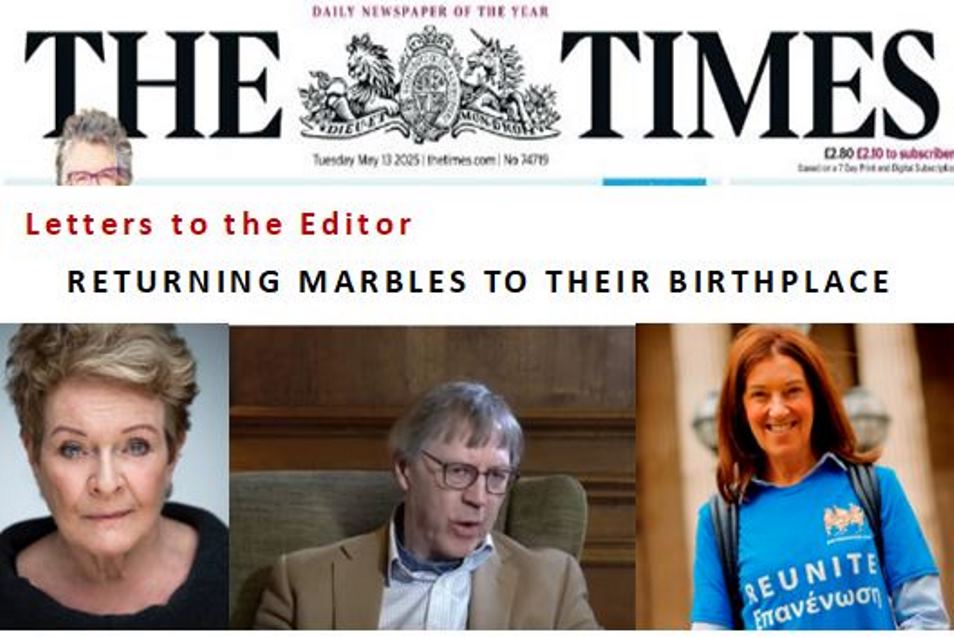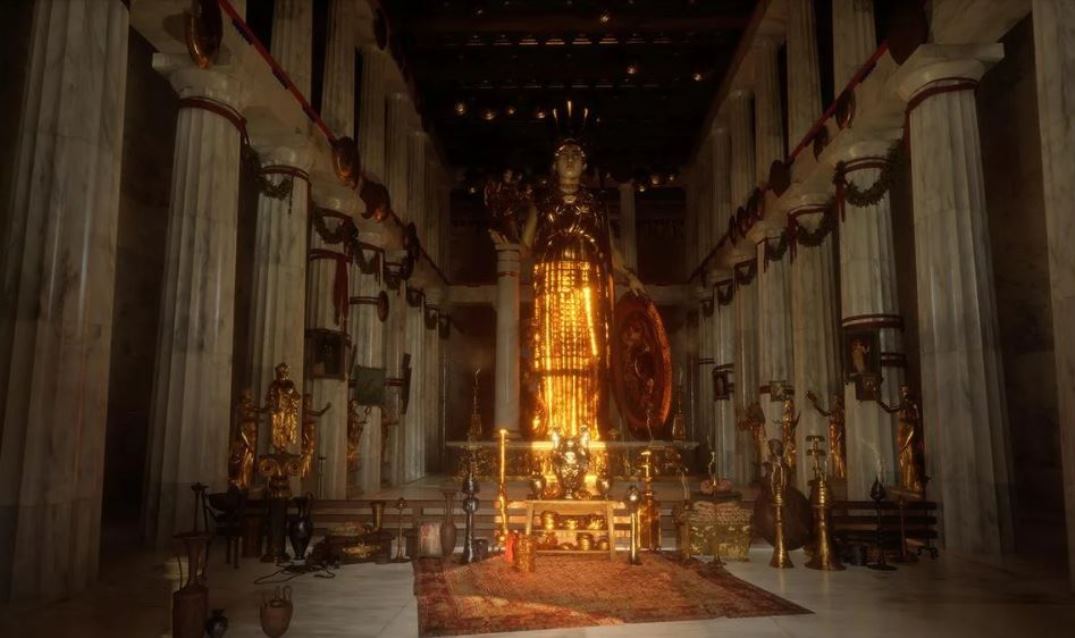The Parthenon Frieze, a unique work of art, is presented in a new website (http://www.parthenonfrieze.gr) which utilizes new technologies to present and elevate cultural content online. This new application, which was carried out by The Hellenic Ministry of Culture and Tourism (YSMA-Acropolis Restoration Service, Department of Information and Education) in collaboration with the National Documentation Centre (EKT), is valuable for specialists and the general public alike.
The application provides the possibility of immediate access to the frieze, both as a database for scholars and, as digital games for schools and their pupils. This virtual representation of the Parthenon Frieze presents, in an articulate and transparent way, in both Greek and English, a comprehensive overview of a masterpiece of significant archeological value. At the same time it is characterized by scientific documentation, becoming thus an essential tool for the archeologist/researcher, as well as for the teacher, who can use it as an educational implement.
The National Documentation Centre, always in the front line of developing Greek cultural content, has collaborated on this application, bringing in new Information Technologies for open access to knowledge. The designing of the application was developed in accordance with contemporary ways of presenting and displaying cultural subjects on the Internet, making use of new technologies and the new educational programmes that have been developed by YSMA and have to do with the description and deepening of knowledge about the Parthenon Frieze.
The application in its new form enhances and upgrades the first digital version that was presented in 2003 in CD-ROM form. Since that version entered the Web, on the EKT website, it has been consistently in first place out of 50,000 postings in the list of world-wide searches conducted through Google.
What is the Parthenon Frieze
The Parthenon frieze, which runs on a continuous line around the exterior wall of the inner chamber of the temple, is 1 meter high and 160 meters long. It represents the Panathenaic procession that was a central celebration in Athens during Classical times, dedicated to the goddess Athena. The frieze consists of 115 blocks where some 378 human figures and deities and more than 200 animals, mainly horses, are represented.
Groups of horses and chariots occupy most of the space on the frieze. The sacrificial procession follows next, with animals and groups of men and women carrying ceremonial vessels and offerings. The procession concludes with the offering of the peplos, the gift of the Athenian people to the cult statue of the Goddess, a xoanon (ancient wooden statue). To the left and right of the peplos scene sit the twelve gods of Mount Olympos.
From the entire frieze that survives today, 50 meters are in the Acropolis Museum, 80 meters in the British Museum, one block in the Louvre, whilst other fragments are scattered in the museums of Palermo, the Vatican, Würzburg, Vienna, Munich and Copenhagen.
The units of virtual Parthenon Frieze
The contents have been organised into three units, entitled "The Parthenon", "Know the Frieze" and "Play with the Frieze".
The unit "The Parthenon" includes a text and illustrations that show the architecture and sculptural decoration of the temple. The sculpture comprises the statue of Athena Parthenos, the pediments, the metopes and the frieze. The frieze is analysed under the following units: the Theme, the Panathenaia, Interpretive Theories, Designing and Construction, History, Conservation, Bibliography. The contents are presented through three-dimensional cards that include the relevant texts and accompanying pictures.
The unit "Know the Frieze" is based on a three-dimensional model of the Parthenon, on which the four sides are distinguished. The user has two possibilities in this unit. The first possibility is to know the frieze according to the side. If you choose the north side, for example, the three-dimensional model revolves and on the screen appear the preserved blocks of that side filled in by the drawings of Carrey. If you select a specific block from that side, it is enlarged and it moves into centre-screen. The user can see it from close-up and can read a text that describes the scene on the block in detail. With the navigation buttons the user can move to the next block.
The second possible choice of "Know the Frieze" unit is entitled "thematic tours". Here the user can approach the frieze through its various themes: preparation, horsemen, chariots, sacrificial procession, gods/goddesses and the handing over of the peplos. Placing the pointer on the titles emphasises the corresponding areas of the three-dimensional model of the frieze. By selecting, for example, the unit "gods/goddesses", the corresponding area of the East Frieze is enlarged on the screen and the tour begins. The relevant text appears at the top of the screen and depending on the content of each phrase, the corresponding areas of the frieze are highlighted.
Play with the Frieze
The third level of the application is entitled "Play with the Frieze" and it is intended for children. It begins with an introduction where the user, whatever his age, can understand very quickly what the frieze was, where it was, what it represented, and he can see a number of statistical facts as well as the games contained in the application. After this, a yellow box appears. This is the museum kit of the frieze: it appears, it opens and out come the games.
The games "Acquaintance with the Figures in the Procession", "The Procession to the Altar", and "Observing the Horses" are games of memory and they are designed to attract children to closer observation of the details of the frieze. In this same category of games, in which the children are asked to exercise their powers of observation, there are two puzzles entitled "The Hidden Chariot" and "A Gift for the Goddess Athena". The children choose a representation and are asked to put together the corresponding puzzle.
The game entitled "Colouring a Block of the Frieze" is intended to enliven the relief scenes of the frieze and to help the children to imagine their colours. The next game is entitled "Be a Conservator". In the game "I Compose the West Frieze", the children try to find the correct position of the 16 blocks of the West Frieze that represent the preparation for the procession of horsemen in the Great Panathenaia. Likewise in the games entitled "Olympian Puzzles: find the gods/goddesses" and "Contests that Remained...on the Vases", the children have to match text with picture.
The unit "Play with the Frieze" has also been enriched by an animation entitled "And Suddenly my Horse became Marble". Here, one of the riders of the frieze has come "alive" and, galloping, tries to find his place in the procession. The moment he finds his place, he turns into marble.
While the museum kit has been used by a total of some 35,000 pupils and has been given to 120 institutions in Greece and 90 abroad, the new application provides the possibility of open access to virtually all who are interested.
Links
Parthenon Frieze
http://www.parthenonfrieze.gr/
Acropolis Restoration Service (YSMA)
http://www.ysma.gr/
National Documentation Centre (EKT)
http://www.ekt.gr





Comments powered by CComment